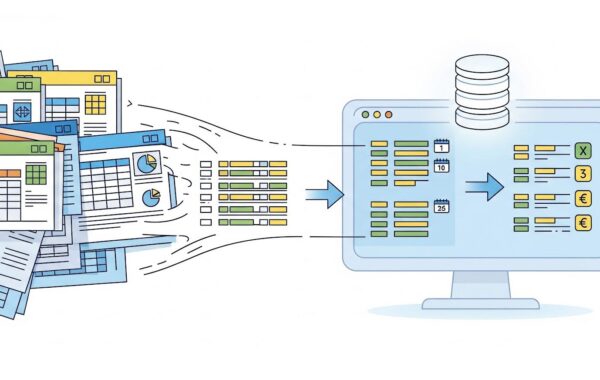Work Towards true Accessibility and Compliance
Why is website management a challenge for universities?
Large web estates with legacy content
The internet practically started in universities in the early 1990s, and as a result, most universities are now dealing with mammoth estates. Virtually every research project will have a website for outreach or dissemination, this creates a challenge as the content may be out of date, they may be running on legacy CMS versions, potentially with accessibility, security, or privacy challenges.
A multitude of content management systems and unclear ownership
Most universities hold several hundred websites, sometimes several thousand, and supporting these sites are dozens or even hundreds of different content management systems. Ownership can be very difficult to keep track of over the years with people changing positions, leaving and new members joining.
Fragmented message and brand inconsistencies
Keeping so many websites and web pages “on-brand” is an arduous task, and ultimately a lack of control leads to low quality and fragmented messaging that can result in a very poor customer experience.
What is a Web Registry?
A Web Registry is an important asset, collated through a process of domain discovery.
A Web Registry should at minimum list all of a University’s websites (domains) and ultimately track their owners (departments/faculties and individuals) in one central place.
Universities must adhere closely to certain rules and regulations, so it’s somewhat critical to have a Web Registry for compliance with web accessibility, GDPR, international privacy laws and security.
Do you need support in domain discovery? If so, we’re here to help. Please do get in touch with us today.
We’ve collated the number of subdomains belonging to some leading universities below, to give an idea of the breadth of content and management requirements.
Danish universities
- ku.dk – 8,500
- au.dk – 4,800
German universities
- lmu.de – 2,800
- tum.de – 29,000
- uni-heidelberg.de – 63,500
UK universities
- ox.ac.uk – 94,700
- cam.ac.uk – 47,700
- usl.ac.uk – 55,300
- lse.ac.uk – 19,400
- ed.ac.uk – 49,300
US universities
- princeton.edu – 34,100
- columbia.edu – 142,500
- mit.edu – 93,500
- yale.edu – 38,300
- stanford.edu – 113,100
Why do universities need a Web Registry?
With a Web Registry in place, you can begin to take control of your web estate. Primarily, looking at compliance, brand application, information accuracy and quality, security, privacy, performance, sustainability and of course, accessibility. All these areas contribute to the overall customer experience as well as complying with any regulations.
Indeed, a negative customer experience can begin before a prospect has even reached your website, for example, if a search engine result contains privacy warnings or alerts to potential phishing attacks. This happens when the search engine has found something of concern in your subdomain.
To automate this type of assessment saves a lot of time and pressure, with peace of mind that any instances will be flagged and you can take immediate action. Understanding ownership of sites in your organisation is critical to this, and ultimately a Web Registry is a central part of improving communication and control across your digital organisation.
What is domain discovery?
How it works
Here at Little Forest, we go through a process of vertical and horizontal discovery:
Horizontal – Looking at the main .org or .ac.uk site, we also look at the registrant information and for other websites your organisation owns.
Vertical – Looking at all the subdomains of your websites that were found, e.g. scan.littleforest.co.uk & stage.littleforest.co.uk
Together, we get a complete picture of all the websites within an organisation.
Where does the data come from?
We use several sub-domain finding tools to guarantee complete coverage:
Data is gathered from:
- DNS entries
- SSL certificate entries
- Search engine entries
That said, there are challenges with the domain discovery data. Automated discovery, while producing incredibly valuable data for business, also creates tons of hay to hide the needles in.
Challenges with domain management tools:
- They do not focus on sub-domains
- They are unable to capture business ownership
- They ignore rules to automate review
- They do not capture version history
- They do not report on quality
What insights will a Web Registry provide?
Site status and ownership
Having a real-time overview of the “status codes” for each of your sites allows you to identify when sites are broken, redirecting, resolving incorrectly or timing out.
Detailed site ownership records will allow you to remedy any issues promptly, and having an overview of estate ownership by department or faculty can enable you to resource support effectively.
Categorisation or tagging functionality can allow you to manage a workflow, for example, assigning priorities for action.
Technologies and scores
It’s critical to know which platforms and the CMS versions each site is running on, SSL information as well as any accessibility issues or errors present.
Performance, SEO and best practice scores will allow you to understand the quality of your website and make any necessary adjustments.
Content policies
Certain information must be made easily accessible, such as an accessibility statement, and a modern slavery act statement. A comprehensive Web Registry encompasses code searches to seek out such information across a web estate and flag when it is missing.
When content such as an accessibility statement is missing, it can be an indicator that more training within that department is needed, and you can begin to work together to build an appropriate accessibility statement.
What’s the ultimate goal of creating a Web Registry for accessibility?
It is great to have management, control and understanding. Looking beyond that, it’s essential that any non compliant sites are prioritised and either updated to meet the WCAG AA guidelines or decommissioned.
What are the best practices for managing large web estates?
- Place responsibility into the hands of the site owners
- Provide training in accessibility across all the whole team including; developers, designers & content editors
- Nurture “accessibility champions” within your organisation to drive knowledge and motivate change
- Work with students with disabilities to test accessibility
- Remind colleagues of the legal requirements
- Praise and reward teams which have made progress
It’s important to note here that a central team cannot manage a Web Registry entirely themselves, the responsibility needs to be devolved into the colleges, faculties and various departments.
Automation is also critical, and including rules to automatically categorise URLs based on patterns present (e.g. “one.maths.ox.ac.uk” belongs to the “maths” department) will help manage a large registry.
Finally, persist with seeking ownership, and circulate the “unassigned” list of websites to see if any business owners will claim it.
Next steps
Gaining control of a web estate consisting of hundreds or thousands, or even a hundred thousand sites is a very daunting task. We hope in this article we’ve introduced you to the advantages a comprehensive Web Registry provides in tackling this challenge.
If you’d like to learn more, receive your own custom domain audit & automated WCAG AA accessibility report or expert advice then we’d love to hear from you.












